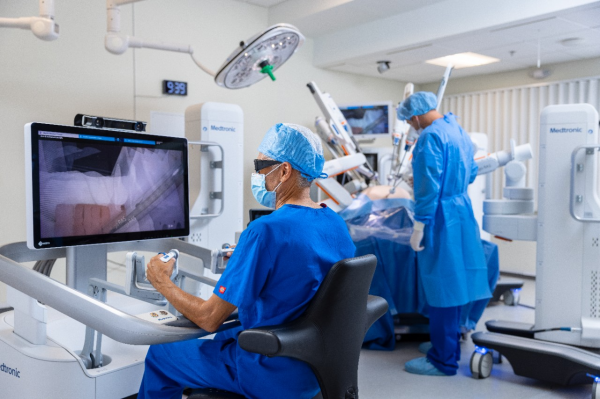Epworth HealthCare is celebrating 20 years since the introduction of robotic surgery in Australia.
“I had seen a prototype of robotics in the US, developed by a start-up company at Stanford University,” said urologist Professor Tony Costello.
“The US Department of Defence and NASA collaborated to build a robot that would digitise a surgeon’s hand movements inside a body, through small ports. I was just blown away by the technology.”
Professor Costello said he returned to Australia and discussed with Epworth chief executive Denis Hogg the potential adoption of the technology's adoption.
“I talked to Denis who was a very forward-thinking CEO and a marvellous contributor to development in medicine at Epworth. Dennis, in his great wisdom, spent $3M and purchased one of the robots," said Professor Costello.
The Da Vinci surgical robot purchased by Epworth was the first in the Asia-Pacific region.
“Robotic surgery is about putting a supercomputer between the surgeon and the patient to digitise hand movement and use the camera system to view images in a body that are magnified 10-times in 3D. It is outstanding technology.”
“You still need the surgeon making all decisions, just like you need a pilot in the cockpit of a plane," continued Professor Costello.
The first robotic prostate cancer surgery in Australia was undertaken at Epworth in the Melbourne suburb of Richmond, taking seven hours. As techniques improved, operating time was soon reduced to three hours. It now takes around 90 minutes.
Professor Costello said it took a few years before surgeons were convinced that robots were the way of the future.
“It took me about four years to realise the train had well and truly left the station and we weren’t going back. Patients have voted for it. When they are told they can be out of hospital a day after surgery, using a robot or spend a week in hospital with traditional open surgery, it was a no brainer.”
“We trained 53 surgeons from the USA, UK, Ireland, Italy, Singapore, and Germany , three at a time for a year, and many of those surgeons went back home and became leaders of robotics in their countries.”
“20 years later, we now have ten different robotic systems in every surgical discipline, including robotic guidance systems in orthopaedic surgery,” added Professor Costello.
